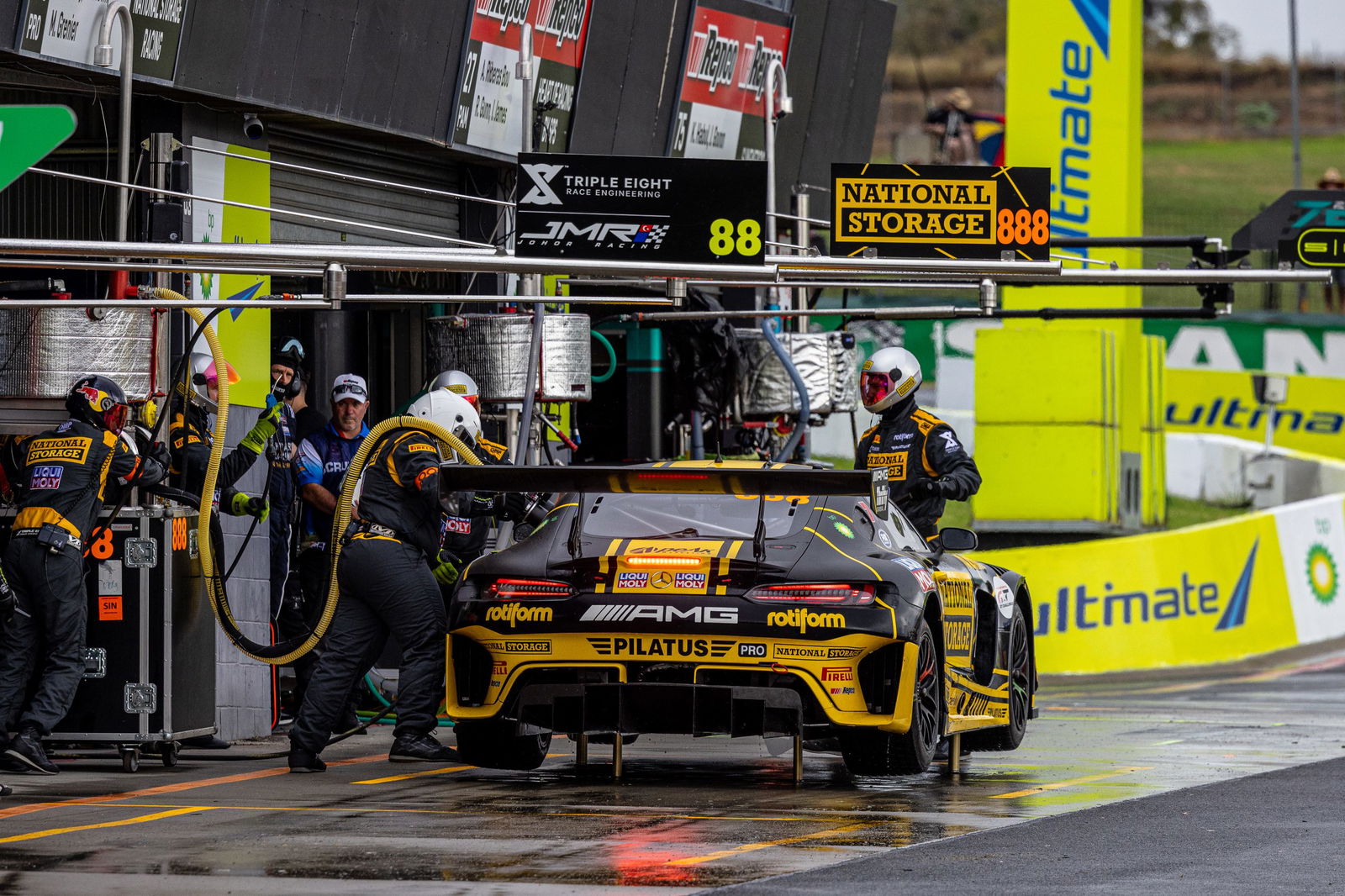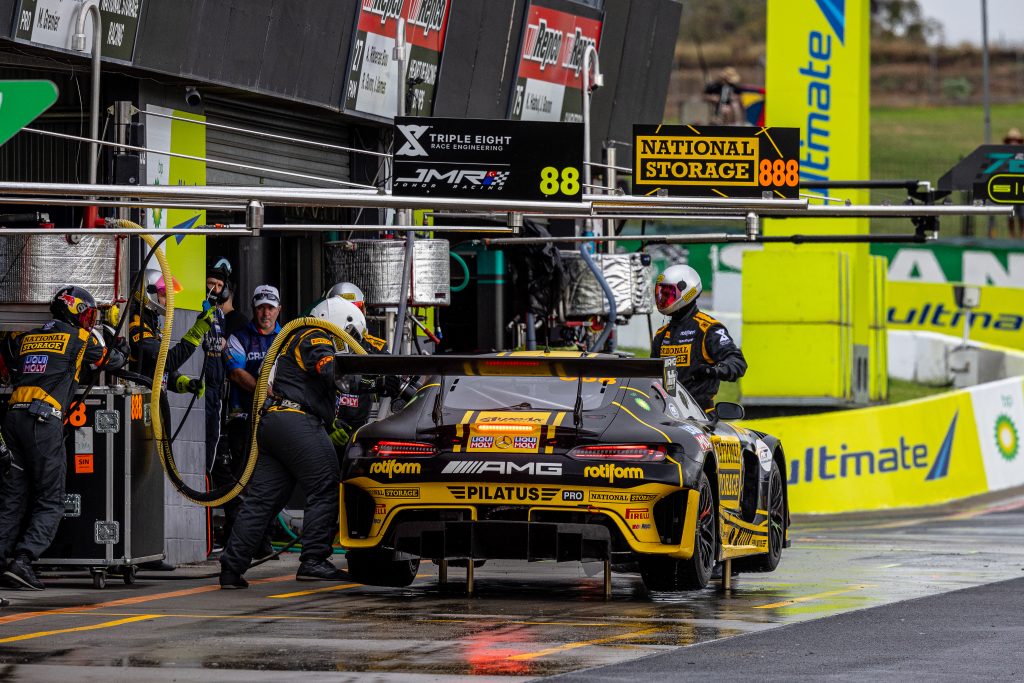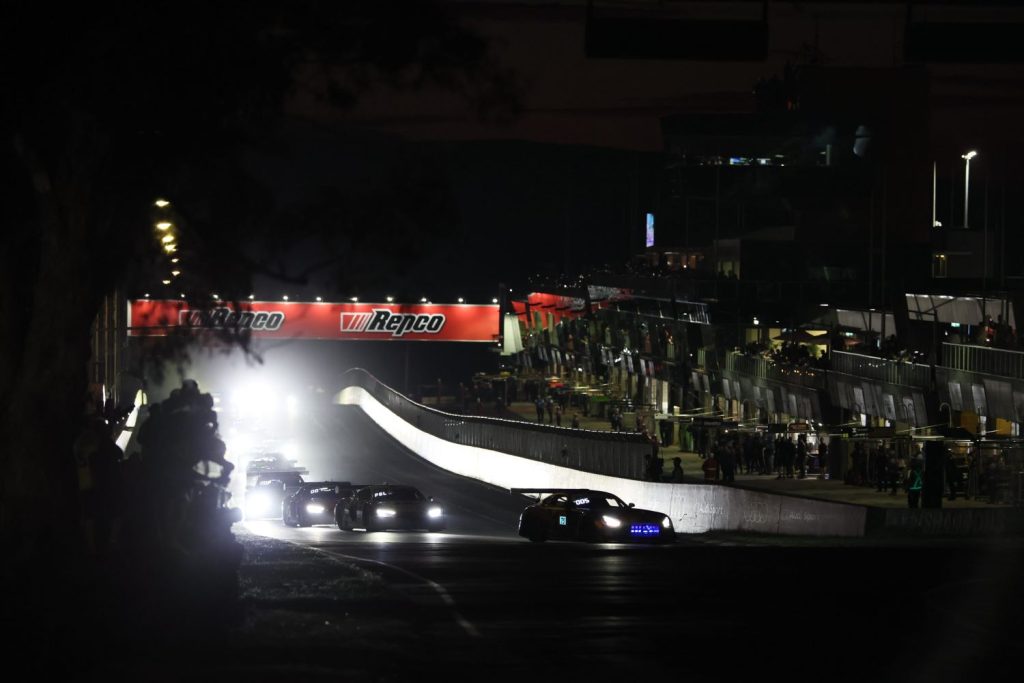

Let me start this column by saying that the Bathurst 12 Hour is my favourite race, full stop. It’s a proper endurance race, pits drivers and teams from overseas against locals, and uses ferociously fast and exotic GT3 cars. I love working in this environment and never cease to learn each time I take part.
But, and it’s a huge But, between SRO (the organisers of the Intercontinental GT Challenge), Supercars (the event promoters) and Motorsport Australia, last weekend saw new levels of pigheaded arrogance, along with a lack of customer (spectator/fan) awareness, demonstrated through the rulebook that will drive this event into the ground if it is not curtailed forthwith.
There are a number of issues that need to be addressed within the industry to ensure the continued success of the 12 Hour, but in the interests of keeping this as simple and succinct as possible I will address two of them.
I will also preface this by saying that not only do overseas teams and drivers, almost universally, love this event, and are therefore very upset by the direction it is currently taking, but that there are several extremely able and hard-working individuals in the background who work their proverbials off to do the ‘right thing’. I’d praise Shane Rudzis and Paul Martin at Supercars, along with the team at Gibson Freight, in particular. These people just get shit done.
This year’s Bathurst 12 Hour marked the Australian introduction of the Full Course Yellow system on track. The system is designed to allow fast and efficient clear-ups to take place without the need for a Safety Car and therefore allows a much quicker return to racing. It’s something that has been used, and refined, extensively around the world at senior levels, including almost every GT series, for a few years now. I’m a big fan of the FCY when used correctly and in the right circumstances.
Many of the drivers and teams from around the world who came to race here at the weekend are familiar with the system and the way it operates.
But then, Motorsport Australia and Supercars decided that they know better than everyone else in the world as to how to best operate a FCY, despite having never operated one here. I won’t bore you with the technical details of the differences – suffice to say that, given this is clearly a safety matter, you’d think that a conservative approach to the introduction of the system locally would be advisable.
With a combination of at least 10 different mother tongues, as well as a large number of Amateur drivers, represented in the field, this was not the time to change a system that so many are familiar with. And yet they did, despite being advised not to.
It may well be that, given the test of time, the MA/Supercars system is a good one. It may work in Supercars with a field of professional drivers and no ‘muscle memory’ of how a FCY works. But why, oh why, try to enforce this onto an international race? The Whincup car front damage during the race was a direct result of misunderstanding on the part of an international driver in front of him, by way of example.
To this can be added the failure to have a proper, full blast, start to the race. We were foisted with a Safety Car start as a result of the failure of Motorsport Australia officials to learn from last year’s race when it was, rightly, deemed necessary to have two warm up laps. The 12 Hour start, in the dark, should be awesome. Two-by-two across the grid and into Turn 1 and then up Mountain Straight is a sight to behold. But on cold tyres on a cold morning, two warm up laps are an absolute necessity especially with a number of Amateur drivers competing. This is normal practise even in GT events run in much warmer conditions. And it costs nothing.
MA personnel refused to countenance two warm up laps when asked earlier in the weekend, so then, when it was made very clear to them again on Sunday morning that this was a necessity, they saved face by using a Safety Car to start the race in single file on “safety grounds.”
Until there is real accountability at MA, these poor decisions will continue to be made, I suspect. But the real bug bear has to be their arrogance in the face of being presented with reasonable alternatives.
These problems pale into insignificance though, next to the major issue that reared its ugly head, for the second year in a row, at Bathurst this year. And that is the encroachment of SRO into the Sporting Regulations of the event, rather than sticking to their remit of balancing the performance of the variety of makes of car through technical tools. In other words, managing the BoP.

For some inexplicable reason, SRO have decided that they will use sporting tools to adjust what is happening on track brand v brand. It will be the downfall of the 12 Hour if it continues.
Last year they fiddled with tyre pressure rules right up until six hours before the start of the race and created an atmosphere of distrust plus allegations of cheating and grey areas that overshadowed the event. This was supposedly because some manufacturers thought a minimum pressure rule affected them more than others. Whatever, it was fortunately dropped this year.
This year they decided, on Saturday afternoon no less, to introduce a rule whereby no car could do more than 32 laps of racing under “normal racing conditions.” This isn’t a Technical rule. It’s a Sporting one. SRO need to sort out whatever technical differences they have make to make through technical rules. That’s their job.
In any case, not only did they fail to define what normal racing conditions were, they also failed to give directions on what happened in the event of Safety Cars, of Full Course Yellows, of wet conditions, or any of the other myriad of variables that can affect a 12-hour race.
The clarifications of this rule, such as they were, were given to teams during the race but only as a result of constant pressure from teams on officials. There were also constant rumours of some teams being given more of an insight into how the rule would work pre-race than others. Back to the atmosphere of distrust again.
They effectively created a Bus Timetable race. Every car to pit at the same time on the same strategy. The boredom was only interrupted by the rain. That saved the day in terms of creating a spectacle in the last few hours as racing a GT3 car in the wet creates more variables than even SRO, to date, can remove, thank God!
READ MORE: Drivers react to “disappointing,” “radical” Bathurst 12 Hour rules
But worst of all in this, was the total and utter lack of respect for the Amateur drivers. An Amateur driver will almost certainly use substantially less fuel than a PRO. That’s because they’re three or four seconds slower. Even the top AMs in the race were not close to the PROs over a stint. So, they deserved to profit from the reduced consumption to travel up to two laps further per stint than a PRO and give themselves a potential strategic advantage. SRO refused to consider giving the AMs longer stints under this new rule.
This arrogance shown towards the people who, in Australia at least, own the GT3 cars will lead to the downfall of our jewel, the B12Hr. The AMs are the lifeblood of the category here. There aren’t enough PRO cars entered to give a large enough grid at Mount Panorama to satisfy the spectator and fan base here. That’s a fact that falls on deaf ears at SRO HQ.
Putting in a Sporting Rule to govern maximum fuel stints (laps per tank) is, to me, outside the remit of SRO and it removes strategy from racing. It’s even worse than the minimum drop rule in Supercars. The teams hated it last weekend. Every viewer I’ve spoken to since simply couldn’t understand what was happening, or why, which was hardly surprising as even the excellent commentary team couldn’t fully explain it either.
If that’s the way SRO want to run their side of the partnership with Supercars for the Bathurst 12 Hour then my advice to Supercars is get rid of them before the value of the event plummets through the floor.
What’s really frustrating though, is that SRO actually do a very good job of running GT series and events in my experience both across Asia and also now here in Australia. The BoP that these events are run under is almost always pretty good and fair. It’s purely technical and works well.
I take my hat off to the success of SRO globally as well. They’re not the only player in the GT racing world, but they are the biggest and deservedly so.
However, in Australia, unlike much of the world (Spa excluded), we have real spectators, we have real, live, free-to-air television on a mainstream channel that is unique in GT3 racing around the planet and therefore the first duty of care should be to the fans as well as the local car owners.
STOP buggering it up! Shape up or ship out.






















Discussion about this post